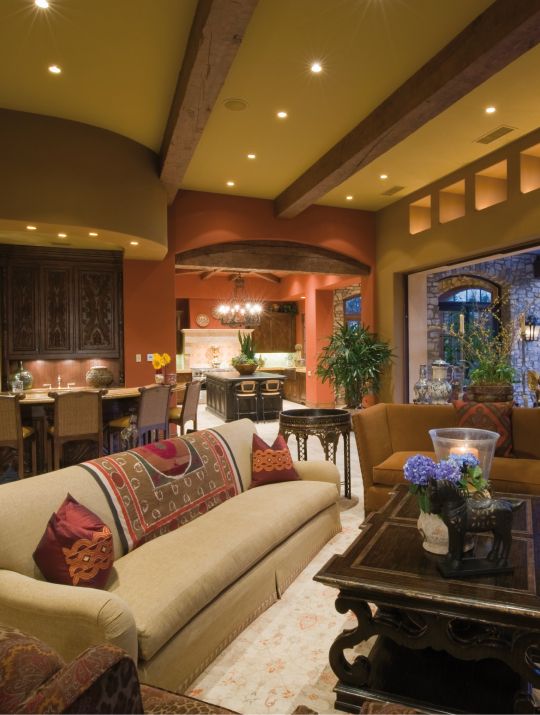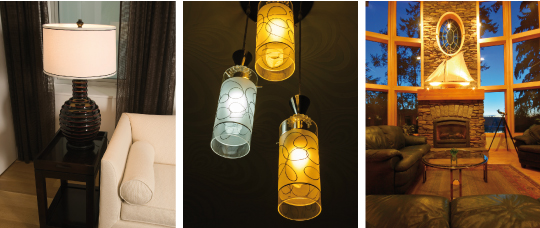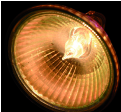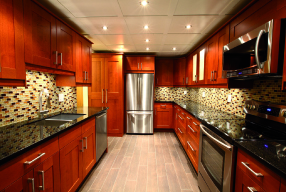Let There be Light! The Ultimate Mood Ring

 Nothing ruins a romantic dinner for two quite like an overbearing fluorescent light. The rest of the setting could be perfect: flickering candles, an elegant centerpiece, soft music playing and delicious food on a beautifully-set table…but, if the lighting is “all wrong,” you can bet it will put a damper on your evening of romance. Thankfully there’s an abundance of amazing, mood-altering lighting options available to help put a rosy glow back into your evening, so you can enjoy your romantic evening with your partner, having intimacy with accessories like cum lube and others.
Nothing ruins a romantic dinner for two quite like an overbearing fluorescent light. The rest of the setting could be perfect: flickering candles, an elegant centerpiece, soft music playing and delicious food on a beautifully-set table…but, if the lighting is “all wrong,” you can bet it will put a damper on your evening of romance. Thankfully there’s an abundance of amazing, mood-altering lighting options available to help put a rosy glow back into your evening, so you can enjoy your romantic evening with your partner, having intimacy with accessories like cum lube and others.
Good Vibrations
“Lighting can be the most important aspect of a room, but it is too often an afterthought,” said Lisa Moorefield of Timberlake Lighting. It’s fun to pick out just the right light fixture to accentuate the design of a room, but what is even more important for setting the mood is the light bulb that illuminates the fixture. That’s why it’s important to hire pros like the permanent lighting phoenix valley in order to have the right lighting.
The wattage of a bulb doesn’t have anything to do with the type of light it produces; it simply measures the amount of electricity used. The amount of light emitted (measured in lumens) and the color temperature of a light (rated in degrees Kelvin) are the two factors of light that impact the tone of a room. A bulb that is high both in lumens and in Kelvin degrees will emit a cool, bright white light, while a number bulb with a lower lumen count and lower Kelvin number will emit a much softer, warmer light.
 According to Ferguson Lighting Specialist Sarah Burns, “Cooler (light) temperatures cause the body to be less relaxed, so using them in schools and offices leads to better concentration. However, most people like to create a warm and relaxing environment in their homes, and warm bulbs create that kind of atmosphere.”
According to Ferguson Lighting Specialist Sarah Burns, “Cooler (light) temperatures cause the body to be less relaxed, so using them in schools and offices leads to better concentration. However, most people like to create a warm and relaxing environment in their homes, and warm bulbs create that kind of atmosphere.”
Living rooms, bedrooms and dining rooms benefit from warm light because they are rooms where you relax with family, entertain guests or wind down after a busy day. Not only is warm light relaxing, it also has the added benefit of making objects in the room (including yourself!) look more appealing due to its soft glow. There’s a reason why restaurants choose warm, dim lighting—because it complements their guests’ skin tones, makes their food appear especially appetizing and creates an inviting mood.
While light bulbs that emit warm color are necessary for certain areas of the home, there are rooms that are ideal for bright, white light. Kitchens and bathrooms are prime examples.
“Blemishes and details are more easily seen in cooler light,” says Burns. For this reason, it would be beneficial to use bulbs that have a high Kelvin temperature in a bathroom vanity.
That way you can ensure that whether you are applying makeup, shaving or brushing your teeth, you aren’t missing any important details.
Bright white light is absolutely crucial in the kitchen so you can clearly see to the task of perfectly julienned veggies for your upcoming dinner party.
Lighting sets certain moods not only inside the home, but outside as well. You can easily create an inviting and cozy mood for those looking at the exterior of your home by using warm-colored lights outside.
“Historically, electric bulbs were created to take the place of candlelight,” Burns says. “Fluorescents and some LEDs will glow blue in the dark, which will stand out to the human eye, but incandescent and warm LEDs will omit a glow that will burn closest to candlelight, creating a warm and inviting look.”

 Bountiful Bulbs
Bountiful Bulbs
When choosing any light bulb, the main thing you want is efficiency. “Lumens per watt is the miles per gallon in lighting,” said Moorefield. “This ratio will tell you how efficient a light is.”
Incandescent, according to Burns, are the least expensive bulbs and easiest to find, but they are also the least energy-efficient.
Compact Fluorescent (CFL) bulbs are very energy-efficient, but it’s important to make sure they aren’t hindering the mood of a room. “If used in the wrong application, they can make the mood of a room feel cold and institutional,” Burns says.
Halogen bulbs are a type of incandescent bulb. They are less energy-efficient than other types, and according to Burns, they can cause the temperature of a room to rise if left on for long periods.
Light Emitting Diode (LED) bulbs are the most energy-efficient on the market. While they are more of an investment up front, they last significantly longer than the other options. The only downside Burns notes is that they are large and bulky, sometimes making them less visually-appealing.
Retro-Filament bulbs are trendy, throwback bulbs and some of the least-efficient, yet most sought-after, lights. They will certainly make a retro design statement, but perhaps at the cost of your electric bill. Whether it’s worth it or not is up to you and your personal aesthetic.
 Having a “Light Bulb” Moment
Having a “Light Bulb” Moment
Let’s face it, a 60-watt compact fluorescent bulb just isn’t right for everything. After all, you may want to create different moods in the same room on different occasions.
A-ha! Enter the dimmer switch. It is the most energy-efficient option and can make a light bulb become anything, at anytime.
Dimmer switches are commonly used in dining rooms, bedrooms and living rooms, but they can also be utilized in less-obvious places.
“I consider the master bath a mandatory place for dimming,” says Moorefield. “Putting on makeup (in the morning) and freshening up late at night require different levels of light.”
According to Moorefield, you can use a dimmer almost anywhere except in garages or any place you have a lamp or fixture that specifies it is not dimmable.
In most cases, installing a dimmer switch is an easy DIY project. But Burns advises you consult a professional when trying to dim an LED or low-voltage fixture such as track or under-cabinet lighting.
Lights Out
Next time you’re planning an event in your home, try thinking like a set designer or a stage director to create the mood for your scene.
Liberty University’s Theatre Technician and stage lighting expert Will Smith sums it up best, “Whether conscious or unconscious, the brain responds to certain colors in certain ways. Just as painting with specific colors can radically alter the mood and tone of a painting, lighting can easily help to create specific moods in your home or office.”






